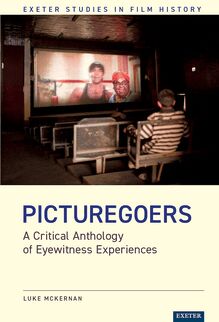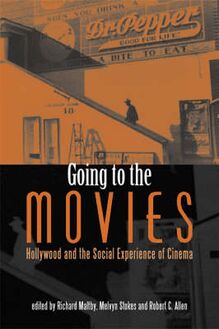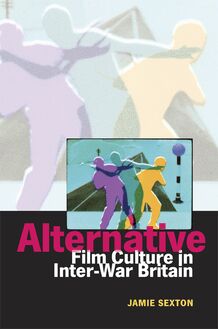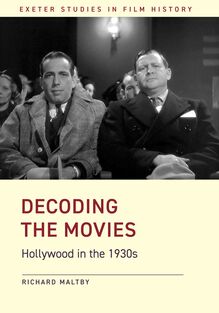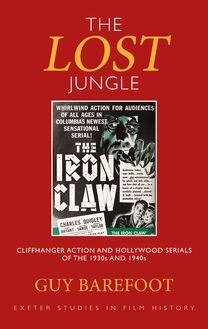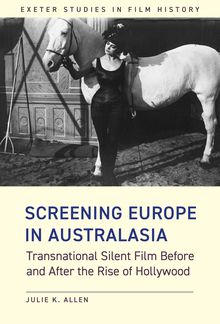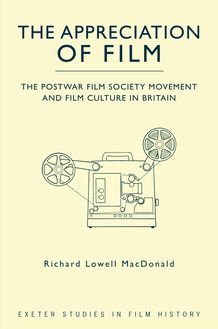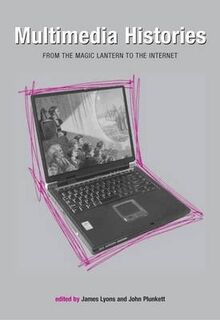The Screen Censorship Companion , livre ebook
247
pages
English
Ebooks
2024
Vous pourrez modifier la taille du texte de cet ouvrage
Obtenez un accès à la bibliothèque pour le consulter en ligne En savoir plus
Découvre YouScribe en t'inscrivant gratuitement
Découvre YouScribe en t'inscrivant gratuitement
247
pages
English
Ebooks
2024
Vous pourrez modifier la taille du texte de cet ouvrage
Obtenez un accès à la bibliothèque pour le consulter en ligne En savoir plus
Publié par
Date de parution
26 novembre 2024
Nombre de lectures
1
EAN13
9781804130674
Langue
English
Throughout the history of film, censorship has existed everywhere—in all shapes, colours, and dimensions. The act of restricting the free production, circulation, screening, and consumption of movies was never unique to authoritarian regimes. Censorship has had far-reaching implications for filmmakers, distributors, exhibitors, and audiences across generations and across genres, including the self-censorship of audiences disciplined into particular viewership positions. Today, soft and hard censorship coexist in ever-more fluid forms; the banning, regulating, trimming, and tailoring of films for ‘harmless’ consumption all exemplify wider debates about access to media.
This companion brings together contemporary and historical views on censorship, covering Argentina, Canada, Chile, Colombia, Denmark, France, Germany, Italy, Japan, Norway, Poland, Sweden, Turkey, the United Kingdom, and the United States. The book considers Hollywood’s practices and the United States’ legislative context as important frames of reference for the study of filmed entertainment censorship, be they concerned with obscene materials or plain mainstream movie fare. American cinema remains a wider compass, as evidenced by how studies in this companion, which deal with local and regional censorship, appear to have American movies as their targets.
This volume showcases the broad international scope of censorship through detailed examinations of censorship practices. The diversity of case studies is an indication of the global reach of censorship—nothing can escape its grasp. Ultimately, the censorship of screen access is a struggle for power and control; this book demonstrates how intense this struggle can become, and how compromises and solutions are found.
Cinema, Screen Media and Censorship: An Introduction Daniel Biltereyst and Ernest Mathijs
DOI:10.47788/RSDL4520
1. ‘Forestalling Controversy’: The Production Code Administration and the Mediation of Political Censorship Richard Maltby
DOI:10.47788/AJXR2557
2. A Philosovietic Mode of Film Censorship: A Supplement to Studies of Cold War Italian Film Culture Karol Jóźwiak
DOI:10.47788/HHUW8463
3. Censorship of Foreign Films in People’s Poland in the Late 1960s and Early 1970s: A Case Study of Films about Hippie Subculture Konrad Klejsa
DOI:10.47788/MWLP4097
4. Sex, Drugs, Violence and/or Nudity: Differences in Film Age Rating Practices and Rationales in Denmark, France, Japan, Norway and the UK Elisabeth Staksrud and Marita Eriksen Haugland
DOI:10.47788/FTMX2611
5. The Last Convulsions of Democracy: Wolfgang Petzet’s Pamphlet Verbotene Filme and the Censorship Debate at the Close of the Weimar Republic Viola Rühse
DOI:10.47788/ODXR8776
6. Party Apparatchiks as Filmmakers: The Film Approval Commissions in Communist Poland, 1955–1970 Mikołaj Kunicki
DOI:10.47788/SNGT2135
7. Majors, Adults, Sex and Violence: Film Censorship under Military Dictatorship in Chile, 1973–1989 Jorge Iturriaga Echeverría
DOI:10.47788/NOXF9829
8. Fighting for a Free Cinema in a Country That Is Not Free: Film Censorship Abolitionism in Argentina (1978–1983) Fernando Ramírez Llorens
DOI:10.47788/XCJE5862
9. Censorship, Criticism and Notions of Quality in Post-War French Cinema Daniel Morgan
DOI:10.47788/RFGD3515
10. Hopes and Fears of Transformation: FOCINE and Informal Practices of Film Censorship in Colombia (1978–1993) Karina Aveyard and Karol Valderrama-Burgos
DOI:10.47788/BEZG4529
11. State Censorship of Debut Films in the 1980s People’s Republic of Poland: The Example of the Irzykowski Film Studio Emil Sowiński
DOI:10.47788/SVEO2240
12. Banned in Detroit: The Interconnectedness of Film, Literary and Media Censorship Ben Strassfeld
DOI:10.47788/HBSC1824
13. Splicing Back against the Censors: How Archive/ Counter-Archive Saved the Ontario Board of Censors’ Film Censorship Records from Destruction Michael Marlatt
DOI:10.47788/XLVW2388
14. Italian Film Censorship (1948–1976): A Quantitative Analysis Mauro Giori and Tomaso Subini
DOI:10.47788/HIIB3780
15. Historicizing the Censor: Path-Dependent Patterns of Film Censorship in Turkey İlke Şanlıer and Aydın Çam
DOI:10.47788/PRKT5596
16. Don’t Be Afraid, It’s Only Business: Rethinking the Video Nasties Moral Panic in Thatcher’s Britain Mark McKenna
DOI:10.47788/GTGZ8668
17. The Ontario Film Review Board Meets the New French Extremity Daniel Sacco
DOI:10.47788/HJES6116
18. Invisible Censors, Opaque Laws and Surveilled Subjects Julian Petley
DOI:10.47788/EUHI2366
19. What Is a Hard Core? Obscenity, Pornography and Censorship Linda Williams
DOI:10.47788/TMRX1263
Publié par
Date de parution
26 novembre 2024
Nombre de lectures
1
EAN13
9781804130674
Langue
English
